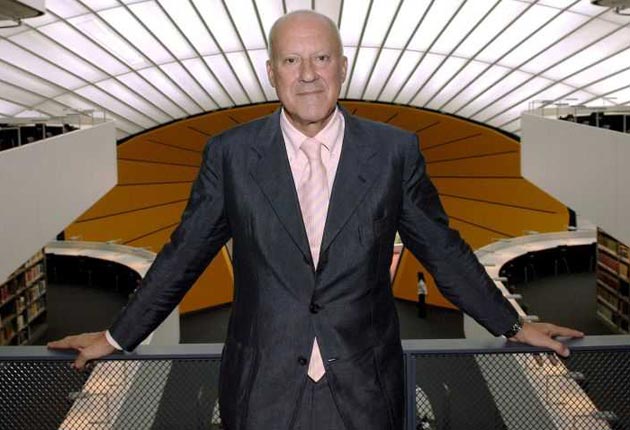Norman Foster: A reputation built to last
A film about Norman Foster has made its debut in Berlin. The architect makes for a gripping subject, says Geoffrey Macnab

'The Fountainhead?" Norman Foster suggests, before I have finished the question. The celebrated architect has been at the Berlin International Film Festival this week for the screening of How Much Does Your Building Weigh, Mr Foster?, an impressive new documentary about his life and career. I have just asked him about the representation of architects in film and literature.
The Fountainhead, a thoroughly preposterous 1943 novel by Ayn Rand which was made into an even more preposterous film by King Vidor, sets the template for fictional depictions of architects. Rand created Howard Roark, a Frank Lloyd Wright-like visionary with a touch of the Nietzschean superman. As played by Gary Cooper in the 1949 film, he is a rugged loner, a cowboy with cultural capital, ready to destroy buildings that his clients tamper with.
Lord Foster is keen to distance himself from Rand's superhero. The architect behind some of the most celebrated public buildings in the world, he is at the helm of Foster + Partners, a huge company which has worked from "the scale of an airport down to the detail of a door handle" in 150 cities, in more than 50 countries. He says his clients hold the whip hand.
"The architect really has no power. That is the truth," Foster says. "The architect is answerable to many different interests and has a responsibility to the client who pays for the building... there are a lot of fantasies about the architect."
Despite Foster's remarks, the new documentary suggests that he has at least a little of Gary Cooper in him. The film opens with Foster taking part in a ski marathon. We also see him competing in bike races. We hear about how he overcame cancer and about the gambles he has taken to build up his business. How Much Does Your Building Weigh, Mr Foster? has been screening in Berlin while the festival has showcased a restored version of Fritz Lang's Metropolis (1927). The movies complement each other. Lang studied architecture, briefly, and the futuristic city he dreamed up in Metropolis is uncannily similar to a project Foster + Partners is working on in Abu Dhabi. The Masdar Development is a carbon-neutral city with driverless trains and elevated walkways.
"Films like Metropolis are an architectural experience," Foster says. "They truly are both inspirational and prophetic." He talks of the way Lang's movie "anticipated the megacities of today".
"Film is an extraordinary medium," Foster says, pointing out that buildings can work in the same way as movies. "Memorable buildings, like the Chrysler Building or Empire State Building, have all happened in periods of depression. They brought glamour, they brought experiences to the ordinary life of many people."
You do not need to be immersed in the world of architecture and design to enjoy the new documentary. Its makers, Norberto Lopez and Carlos Carcas, who worked with crews all over the world, use music, constantly moving cameras and voiceover to bring Foster's world to life. Deyan Sudjic, the author of the authorised biography of Foster, wrote the commentary and narrates the film.
This is hardly a critical study. At times, it is close to hagiography. However, as the cameras glide and swoop through some of Foster's most famous constructions, the effect is eerily beautiful. Few movie sets come close to matching the mystery and grandeur of these buildings.
Join our commenting forum
Join thought-provoking conversations, follow other Independent readers and see their replies
Comments
Bookmark popover
Removed from bookmarks